Review on the Integration of Microelectronics for E-Textile
Abstract
:1. Introduction
2. Integration Techniques
2.1. Mechanical Connectors
2.2. Soldering
2.3. Sewing and Embroidering
2.4. Hybrid Solder and Sewing Integration
2.5. Electrical Conductive Adhesive
2.6. Inkjet and 2D Screen-Printing
2.7. Three-Dimensional (3D) Printing
2.8. Stretchable Electronics
2.9. Electronic Connections on Threads (E-Threads)
3. Outlook, Future Perspectives and Conclusions
Author Contributions
Funding
Conflicts of Interest
References
- Van Langenhove, L.; Hertleer, C. Smart clothing: A new life. Int. J. Cloth. Sci. Technol. 2004, 16, 63–72. [Google Scholar] [CrossRef]
- Koncar, V. Introduction to Smart Textiles and Their Applications; Elsevier: Amsterdam, The Netherlands, 2016; ISBN 9780081005835. [Google Scholar]
- Krajewski, A.S.; Magniez, K.; Helmer, R.J.N.; Schrank, V. Piezoelectric force response of novel 2d textile based pvdf sensors. IEEE Sens. J. 2013, 13, 4743–4748. [Google Scholar] [CrossRef]
- Gomes, P.; Tama, D.; Yao, Y.; Abreu, M.J.; Souto, A.P.; Carvalho, H. Development of pressure sensors for smart textiles. IOP Conf. Ser. Mater. Sci. Eng. 2018, 460, 012024. [Google Scholar] [CrossRef] [Green Version]
- Su, P.G.; Chang, C.F. Fabrication and electrical and humidity-sensing properties of a flexible and stretchable textile humidity sensor. J. Taiwan Inst. Chem. Eng. 2018, 87, 36–43. [Google Scholar] [CrossRef]
- Soukup, R.; Hamacek, A.; Mracek, L.; Reboun, J. Textile based temperature and humidity sensor elements for healthcare applications. In Proceedings of the 2014 37th International Spring Seminar on Electronics Technology (ISSE), Dresden, Germany, 7–11 May 2014; pp. 407–411. [Google Scholar] [CrossRef]
- Seyedin, S.; Zhang, P.; Naebe, M.; Qin, S.; Chen, J.; Wang, X.; Razal, J.M. Textile strain sensors: A review of the fabrication technologies, performance evaluation and applications. Mater. Horizons 2019, 6, 219–249. [Google Scholar] [CrossRef]
- Tessarolo, M.; Gualandi, I.; Fraboni, B. Recent progress in wearable fully textile chemical sensors. Adv. Mater. Technol. 2018, 3, 1700310. [Google Scholar] [CrossRef]
- Windmiller, J.R.; Wang, J. Wearable Electrochemical Sensors and Biosensors: A Review. Electroanalysis 2013, 25, 29–46. [Google Scholar] [CrossRef]
- Schwarz, A.; Van Langenhove, L.; Guermonprez, P.; Deguillemont, D. A roadmap on smart textiles. Text. Prog. 2010, 42, 99–180. [Google Scholar] [CrossRef]
- Stylios, G.K.; Wan, T. Shape memory training for smart fabrics. Trans. Inst. Meas. Control 2007, 29, 321–336. [Google Scholar] [CrossRef]
- Li, L. The Application Wearable Thermal Textile Technology in Thermal-Protection Applications. Latest Trends Text. Fash. Des. 2018, 1, 22–30. [Google Scholar] [CrossRef]
- Maity, S.; Chatterjee, A.; Singh, B.; Pal Singh, A. Polypyrrole based electro-conductive textiles for heat generation. J. Text. Inst. 2014, 105, 887–893. [Google Scholar] [CrossRef]
- Zhai, S.; Karahan, H.E.; Wei, L.; Qian, Q.; Harris, A.T.; Minett, A.I.; Ramakrishna, S.; Ng, A.K.; Chen, Y. Textile energy storage: Structural design concepts, material selection and future perspectives. Energy Storage Mater. 2016, 3, 123–139. [Google Scholar] [CrossRef]
- Jost, K.; Dion, G.; Gogotsi, Y. Textile energy storage in perspective. J. Mater. Chem. A 2014, 2, 10776–10787. [Google Scholar] [CrossRef]
- Schneegas, S. Smart Textiles Fundamentals, Design, and Interaction; Springer: New York, NY, USA, 2017; ISBN 978-3-319-50123-9. [Google Scholar]
- Suh, M.W.; Woo, J.L.; Koo, H. Smart Fashion and Wearable Technology: Opportunities and Challenges for Future Growth. JTSFT 2018, 1, 691–696. [Google Scholar]
- Köhler, A. End-of-life implications of electronic textiles Assessment of a converging technology. Master’s Thesis, The International Institute for Industrial Environmental Economics—IIIEE, Lund University, Lund, Sweden, October 2008; pp. 1–88. [Google Scholar]
- Ghahremani Honarvar, M.; Latifi, M. Overview of wearable electronics and smart textiles. J. Text. Inst. 2017, 108, 631–652. [Google Scholar] [CrossRef]
- Thorp, E.O.; Thorp, E.O. The Invention of the First Wearable Computer. In Proceedings of the Second International Symposium on Wearable Computers (Cat. No.98EX215), Pittsburgh, PA, USA, 19–20 October 1998; pp. 1–14. [Google Scholar]
- Klein, R.G. The relevance of Old World archeology to the first entry of man into the New World. Quat. Res. 1975, 5, 391–394. [Google Scholar] [CrossRef]
- Sutherland, I.E. Head-Mounted Three Dimensional Display. In Proceedings of the Fall Joint Computer Conference, Part I, San Francisco, CA, USA, 9–11 December 1968; ACM: New York, NY, USA, 1968. [Google Scholar] [CrossRef] [Green Version]
- Mann, S. Wearable computing: A first step toward personal imaging. Computer 1997, 30, 25–32. [Google Scholar] [CrossRef]
- Ojuroye, O. ‘Levels of Electronic Integration within Textiles’ Chart. Univ. Southampt. Inst. Repos. 2017, 12, 104758. [Google Scholar]
- Rambausek, L. Textronics Defination, Development and Characterization of Fibrous Organic Field Effect Transistors. J. Chem. Inf. Model. 2014, 53. [Google Scholar]
- Bosowski, P. Electronic Textiles Smart Fabrics and Wearable Technology. In Electronic Textiles; Dias, T., Ed.; Elsevier Ltd.: Amsterdam, The Netherlands, 2015; pp. 75–110. ISBN 9780857093424. [Google Scholar]
- Kim, K.; Joo, D.; Lee, K.P. Wearable-object-based interaction for a mobile audio device. In Proceedings of the Conference on Human Factors in Computing Systems, Atlanta, GA, USA, 10–15 April 2010; ACM Press: New York, NY, USA, 2010; pp. 3865–3870. [Google Scholar]
- Rantanen, J.; Impiö, J.; Karinsalo, T.; Malmivaara, M.; Reho, A.; Tasanen, M.; Vanhala, J. Smart Clothing Prototype for the Arctic Environment; Springer: London, UK, 2002; Volume 6, pp. 3–16. [Google Scholar]
- Suh, M.; Carroll, K.; Cassill, N. Critical Review on Smart Clothing Product Development. JTATM 2010, 6, 1–18. [Google Scholar]
- Hughes-Riley, T.; Dias, T.; Cork, C. A Historical Review of the Development of Electronic Textiles. Fibers 2018, 6, 34. [Google Scholar] [CrossRef] [Green Version]
- Hardianto, H.; De Mey, G.; Ciesielska-Wróbel, I.; Hertleer, C.; Van Langenhove, L. Seebeck coefficient of thermocouples from nickel-coated carbon fibers: Theory and experiment. Materials 2018, 11, 922. [Google Scholar] [CrossRef] [Green Version]
- Müller, C.; Hamedi, M.; Karlsson, R.; Jansson, R.; Marcilla, R.; Hedhammar, M. Woven electrochemical transistors on silk fibers. Adv. Mater. 2011, 23, 898–901. [Google Scholar] [CrossRef]
- ISO—ISO/TR 16298:2011—Textiles and Textile Products—Smart (Intelligent) Textiles—Definitions, Categorisation, Applications and Standardization Needs. 2011. Available online: https://www.iso.org/standard/75383.html (accessed on 18 August 2021).
- Cherenack, K.; Van Pieterson, L. Smart textiles: Challenges and opportunities. J. Appl. Phys. 2016, 121, 091301. [Google Scholar] [CrossRef] [Green Version]
- Gniotek, K.; Krucińska, I. The basic problems of textronics. Fibres Text. East. Eur. 2004, 12, 13–16. [Google Scholar]
- Stoppa, M.; Chiolerio, A. Wearable Electronics and Smart Textiles: A Critical Review. Sensors 2014, 14, 11957–11992. [Google Scholar] [CrossRef] [PubMed] [Green Version]
- Shirakawa, H.; Louis, E.J.; MacDiarmid, A.G.; Chiang, C.K.; Heeger, A.J. Synthesis of electrically conducting organic polymers: Halogen derivatives of polyacetylene, (CH)x. J. Chem. Soc. Chem. Commun. 1977, 16, 578–580. [Google Scholar] [CrossRef]
- Petry, W. Electrically Conductive Textile Fabric Having Conductivity Gradient. U.S. Patent 5,102,727, 1 April 1992. [Google Scholar]
- George, A. Integral, Electrically-Conductive Textile Filament. U.S. Patent 5,102,727, 6 September 1977. [Google Scholar]
- Singha, K.; Kumar, J.; Pandit, P. Recent Advancements in Wearable & Smart Textiles: An Overview. Mater. Today Proc. 2019, 16, 1518–1523. [Google Scholar]
- Meoli, D.; May-Plumlee, T. Interactive electronic textile development: A review of technologies. J. Text. Appar. Technol. Manag. 2002, 2, 1–12. [Google Scholar]
- Viswanathan, S. E-Textile and its Applications. IJESC 2019, 9, 20173–20176. [Google Scholar]
- Augusto, J.C.; Nakashima, H.; Aghajan, H. Handbook of Ambient Intelligence and Smart Environment; Springer Science & Business Media: Berlin/Heidelberg, Germany, 2010; pp. 3–31. ISBN 9780387938080. [Google Scholar]
- Salme, N. Protection Against Electrostatic and Electromagnetic Phenomena; Duquesne, S., Ed.; Springer: Berlin/Heidelberg, Germany, 2017. [Google Scholar]
- Onogi, Y.; Sugiura, N.; Nakaoka, Y. Dissipation of Triboelectric Charge into Air from Textile Surfaces. Text. Res. J. 1996, 66, 337–342. [Google Scholar] [CrossRef]
- Marchini, F. Advanced Applications of Metallized Radiation Shielding. J. Ind. Text. 1991, 20, 153–166. [Google Scholar]
- Varnaitė-Žuravliova, S.; Baltušnikaitė-guzaitienė, J.; Valasevičiūtė, L.; Verbienė, R. Assessment of Electrical Characteristics of Conductive Woven Fabrics. Am. J. Mech. Ind. Eng. 2016, 1, 38–49. [Google Scholar] [CrossRef]
- Varnaitė-Žuravliova, S. The Types, Properties, and Applications of Conductive Textiles; Cambridge Scholars Publishing: Cambridge, UK, 2019. [Google Scholar]
- Zhang, X. Antistatic and Conductive Textiles; Woodhead Publishing Limited: Sawston, UK, 2011; pp. 27–144. ISBN 9781845697235. [Google Scholar]
- Berglin, L. Interactive Textile Structures Creating Multifunctional Textiles based on Smart Materials. Ph.D. Thesis, Chalmers University of Technology, Gothenburg, Sweden.
- Tyler, D.; Wood, J.; Sabir, T.; McDonnell, C.; Sayem, A.S.M.; Whittaker, N. Wearable electronic textiles. Text. Prog. 2019, 51, 299–384. [Google Scholar] [CrossRef]
- Cho, G. Smart Clothing Technology and Applications, Human Factors and Ergonomics; Taylor & Francis Group: New York, 2009; ISBN 9781420088526. [Google Scholar]
- Suh, M. E-Textiles For Wearability: Review Of Integration Technologies. Text. World 2010. [Google Scholar]
- De Mulatier, S.; Nasreldin, M.; Delattre, R.; Ramuz, M.; Djenizian, T. Electronic Circuits Integration in Textiles for Data Processing in Wearable Technologies. Adv. Mater. Technol. 2018, 3, 1700320. [Google Scholar] [CrossRef]
- Li, Q.; Tao, X.M. Three-dimensionally deformable, highly stretchable, permeable, durable and washable fabric circuit boards. Proc. R. Soc. A Math. Phys. Eng. Sci. 2014, 470, 20140472. [Google Scholar] [CrossRef]
- Whitley, J.H. The Mechanics of Pressure Connections. In Proceedings of the EDN Regional Engineers Meeting, New York, NY, USA, 3 December 1964; pp. 3–8. [Google Scholar]
- Mroczkowski, R.S.; Geckle, R.J. Concerning “cold welding” in crimped connections. In Proceedings of the Electrical Contacts—1995 Proceedings of the Forty-First IEEE Holm Conference on Electrical Contacts, Montreal, QC, Canada, 2–4 October 1995; pp. 154–164. [Google Scholar]
- Bernardoni, L.L.; Swirbel, T.J. Low Profle Mechancal Interconnect System Having Metalzed Loop and Hoop Area. U.S. Patent 5,457,610, 10 October 1995. [Google Scholar]
- Mroczkowski, R.S. Electronic Connector Handbook Theory and Application. McGraw-Hill: New York, NY, USA, 1998; ISBN 0070414017. [Google Scholar]
- Cottrell, D.F.; Kirejczyk, T.E. Crimp Connection Reliablity; Martin Marietta Aerospace: Oelando, FL, USA, 1978. [Google Scholar]
- Zhmurkin, D.V.; Corman, N.E.; Copper, C.D.; Hilty, R.D. 3-Dimensional numerical simulation of open-Barrel crimping process. In Proceedings of the 54th IEEE Holm Conference on Electrical Contacts, Orlando, FL, USA, 27–29 October 2008; IEEE: New York, NY, USA, 2008; pp. 178–184. [Google Scholar]
- Zhmurkin, D.V. 3-D simulation of open-barrel crimping process: Study of the effect of serrations. In Proceedings of the 55th IEEE Holm Conference on Electrical Contacts, Vancouver, BC, Canada, 14–16 September 2009; pp. 112–118. [Google Scholar] [CrossRef]
- Simon, E.P.; Kallmayer, C.; Schneider-Ramelow, M.; Lang, K.D. Development of a multi-terminal crimp package for smart textile integration. In Proceedings of the 2012 4th Electronic System-Integration Technology Conference, Amsterdam, The Netherlands, 17–20 September 2012; pp. 1–6. [Google Scholar] [CrossRef]
- Tunde, T.K. Multidisciplinary Know How for Smart Textiles Dveloper; Elisiver: Cambridge, UK, 2013. [Google Scholar]
- Antonio, C. connectors for connecting electronics embedded in garments to external devices. U.S. Patent 9,837,760, 5 December 2017. [Google Scholar]
- Lehn, D.I.; Neely, C.W.; Schoonover, K.; Martin, T.L.; Jones, M.T. Ettachments for e-Textiles. In Proceedings of the 7th IEEE International Symposium, White Plains, NY, USA, 21–23 October 2003; pp. 21–23. [Google Scholar]
- Buechley, L.; Eisenberg, M. Fabric PCBs, electronic sequins, and socket buttons: Techniques for e-textile craft. Pers. Ubiquitous Comput. 2009, 13, 133–150. [Google Scholar] [CrossRef]
- Mecnika, V.; Scheulen, K.; Anderson, C.F.; Hörr, M.; Breckenfelder, C. Joining technologies for electronic textiles. In Electronic Textiles: Smart Fabrics and Wearable Technology; Woodhead Publishing: Cambridge, UK, 2015; pp. 133–153. [Google Scholar] [CrossRef]
- Ngai, G.; Chan, S.C.F.; Cheung, J.C.Y.; Lau, W.W.Y. The teeboard: An education-friendly construction platform for e-textiles and wearable computing. In Proceedings of the Conference on Human Factors in Computing Systems, Boston, MA, USA, 6 April 2009; pp. 249–258. [Google Scholar]
- Chen, S.J.; Kaufmann, T.; Ranasinghe, D.C.; Fumeaux, C. A Modular Textile Antenna Design Using Snap-on Buttons for Wearable Applications. IEEE Trans. Antennas Propag. 2016, 64, 894–903. [Google Scholar] [CrossRef] [Green Version]
- Seager, R.D. Flexible radio frequency connectors for textile electronics. Electron. Lett. 2013, 49, 1371–1373. [Google Scholar] [CrossRef] [Green Version]
- Berglund, M.E.; Duvall, J.; Dunne, L.E. Surface-Mount Component Attachment for E-Textiles. In Proceedings of the 2015 ACM International Symposium on Wearable Computers, Osaka, Japan, 7–11 September 2015; pp. 65–66. [Google Scholar]
- Molla, M.T.I.; Goodman, S.; Schleif, N.; Berglund, M.E.; Zacharias, C.; Compton, C.; Dunne, L.E. Surface-mount manufacturing for E-textile circuits. In Proceedings of the 2017 ACM International Symposium on Wearable Computers, Maui HI, USA , 11–15 September 2017; pp. 18–25. [Google Scholar] [CrossRef]
- Zięba, J. Magnetic Textile Elements. Fibres Text. East. Eur. 2013, 14, 49–53. [Google Scholar]
- Scheulen, K.; Schwarz, A.; Jockenhoevel, S. Reversible contacting of smart textiles with adhesive bonded magnets. In Proceedings of the 2013 International Symposium on Wearable Computers, Zurich, Switzerland, 8–12 September 2013; pp. 131–132. [Google Scholar] [CrossRef]
- Righetti, X.; Thalmann, D. Proposition of a modular I2C-based wearable architecture. Proc. Mediterr. Electrotech. Conf. Melecon 2010, 15, 802–805. [Google Scholar] [CrossRef]
- Tobias, R.H. Joining Methods in Electronics Packaging: Sintered Silver and Eutectic Bonding; Department of Mechanical Engineering, Thomas J. Watson School of Engineering and Applied Science, University of New York at Binghamton: New York, NY, USA, 2015. [Google Scholar]
- Gehrke, I.; Tenner, V.; Lutz, V.; Schmelzeisen, D.; Gries, T. Smart Textiles Production: Overview of Materials, Sensor and Production Technologies for Industrial Smart Textiles; RWTH Aachen University: Aachen, Germany, 2019; ISBN 9783038974970. [Google Scholar]
- Kim, S.-C.; Kim, Y.-H. Low Temperature bonding Technology for Electronic Packaging. J. Microelectron. Packag. Soc. 2012, 19, 17–24. [Google Scholar] [CrossRef]
- Mei, Z.; Hua, F.; Glazer, J.; Key, C.C. Low temperature soldering. Proc. IEEE/CPMT Int. Electron. Manuf. Technol. Symp. 1997, 19, 463–469. [Google Scholar]
- Choi, J.Y.; Park, D.H.; Oh, T.S. Chip Interconnection Process for Smart Fabrics Using Flip-Chip Bonding of SnBi Solder. J. Microelectron. Packag. Soc. 2012, 19, 71–76. [Google Scholar] [CrossRef] [Green Version]
- Athnayake, A. Development of the Core Technology for the Creation of Electronically-Active, Smart Yarn; Nottingham Trent University: Nottingham, UK, 2015. [Google Scholar]
- Kang, H.; Rajendran, S.H.; Jung, J.P. Low Melting Temperature Sn-Bi Solder: Effect of Alloying and Nanoparticle Addition on the Microstructural, Thermal, Interfacial Bonding, and Mechanical Characteristics. Metals 2021, 11, 364. [Google Scholar] [CrossRef]
- Harman, G.G. Wire Bonding in Microelectronics; McGraw-Hill: New York, 2010; ISBN 9780071476232. [Google Scholar]
- Koshi, T.; Nomura, K.I.; Yoshida, M. Electronic component mounting for durable e-textiles: Direct soldering of components onto textile-based deeply permeated conductive patterns. Micromachines 2020, 11, 209. [Google Scholar] [CrossRef] [Green Version]
- Bahadir, S.K.; Kalaoğlu, F.; Jevšnik, S. The use of hot air welding technologies for manufacturing e-textile trasmission lines. Fibers Polym. 2015, 16, 1384–1394. [Google Scholar] [CrossRef] [Green Version]
- Senders, F.; van Beurden, M.; Palardy, G.; Villegas, I.F. Zero-flow: A novel approach to continuous ultrasonic welding of CF/PPS thermoplastic composite plates. Adv. Manuf. Polym. Compos. Sci. 2016, 2, 83–92. [Google Scholar] [CrossRef] [Green Version]
- Du, D.; Tang, Z.; Ouyang, J. Highly washable e-textile prepared by ultrasonic nanosoldering of carbon nanotubes onto polymer fibers. J. Mater. Chem. C 2018, 6, 883–889. [Google Scholar] [CrossRef]
- Micus, S.; Haupt, M.; Gresser, G.T. Soldering electronics to smart textiles by pulsed Nd:YAG laser. Materials 2020, 13, 2429. [Google Scholar] [CrossRef]
- Lanin, V.L. Infrared heating in the technology of soldering components in electronics. Surf. Eng. Appl. Electrochem. 2007, 43, 381–386. [Google Scholar] [CrossRef]
- Tao, X.; Koncar, V.; Huang, T.H.; Shen, C.L.; Ko, Y.C.; Jou, G.T. How to make reliable, washable, and wearable textronic devices. Sensors 2017, 17, 673. [Google Scholar] [CrossRef] [Green Version]
- Kallmayer, C.; Pisarek, R.; Neudeck, A.; Cichos, S.; Gimpel, S.; Aschenbrenner, R.; Reichl, H. New assembly technologies for textile transponder systems. In Electronic Components and Technology Conference; IEEE: New York, NY, USA, 2003; pp. 1123–1126. [Google Scholar] [CrossRef]
- Mikkonen, J.; Pouta, E. Weaving Electronic Circuit into Two-layer Fabric. In Proceedings of the 2015 ACM International Joint Conference on Pervasive and Ubiquitous Computing and Proceedings of the 2015 ACM International Symposium on Wearable Computers, Osaka, Japan, 7–11 September 2015; pp. 245–248. [Google Scholar] [CrossRef]
- Dhawan, A.; Ghosh, T.K.; Seyam, A.M.; Muth, J. Development of woven fabric-based electrical circuits. Mater. Res. Soc. Symp.-Proc. 2002, 736, 67–72. [Google Scholar] [CrossRef]
- Atalay, O.; Kalaoglu, F.; Kursun Bahadir, S. Development of textile-based transmission lines using conductive yarns and ultrasonic welding technology for e-textile applications. J. Eng. Fiber. Fabr. 2019, 14, 1–8. [Google Scholar] [CrossRef]
- Linz, T.; Kallmayer, C.; Aschenbrenner, R.; Reichl, H. Embroidering electrical interconnects with conductive yarn for the integration of flexible electronic modules into fabric. Proc. Int. Symp. Wearable Comput. ISWC 2005, 2005, 86–89. [Google Scholar] [CrossRef]
- Linz, T. Analysis of Failure Mechanisms of Machine Embroidered Electrical Contacts and Solutions for Improved. Ph.D. Thesis, Ghent University, Ghent, Belgium, 2011. [Google Scholar]
- Linz, T.; Simon, E.; Walter, H. Fundamental analysis of embroidered contacts for electronics in textiles. In Proceedings of the 3rd Electronics System Integration Technology Conference ESTC, Berlin, Germany, 13–16 September 2010; IEEE: New York, NY, USA, 2010; pp. 1–5. [Google Scholar] [CrossRef]
- Hamdan, N.A.H.; Voelker, S.; Borchers, J. Sketch&Stitch: Interactive embroidery for E-Textiles. In Proceedings of the 2018 CHI Conference on Human Factors in Computing Systems, Montreal, QC, Canada, 21–26 April 2018; 2018; pp. 1–13. [Google Scholar] [CrossRef]
- Donneaud, M.; Honnet, C.; Strohmeier, P. Designing a Multi-Touch eTextile for Music Performances. In Proceedings of the International Conference, New Interfaces Music, Baton Rouge, LA, USA, 31 May–3 June 2015; 2017; pp. 7–12. [Google Scholar]
- Liu, X.; Lillehoj, P.B. Embroidered electrochemical sensors for biomolecular detection. R. Soc. Chem. 2016, 16, 2093–2098. [Google Scholar] [CrossRef]
- Šahta, I.; Vališevskis, A.; Baltiņa, I.; Ozola, S. Development of Textile Based Sewn Switches for Smart Textile. Adv. Mater. Res. 2015, 1117, 235–238. [Google Scholar] [CrossRef]
- Ismar, E.; Zaman, S.U.Z.; Tao, X.; Cochrane, C.; Koncar, V. Effect of Water and Chemical Stresses on the Silver Coated Polyamide Yarns. Fibers Polym. 2019, 20, 2604–2610. [Google Scholar] [CrossRef]
- Post, E.R.; Orth, M.; Russo, R.R.; Gershenfeld, N. E-broîdery: Design and fabrication of textile-based computing. IBM Syst. J. 2000, 39, 840–860. [Google Scholar] [CrossRef]
- Linz, T.; Kallmayer, C.; Aschenbrenner, R.; Reichl, H. New Interconnection Technologies for the Integration of Electronics on Textile Substrates. Ambience. 2005. Available online: http://publica.fraunhofer.de/eprints/urn_nbn_de_0011-n-1205423.pdf (accessed on 10 September 2019).
- Linz, T.; Kallmayer, C.; Aschenbrenner, R.; Reichl, H. Fully integrated EKG shirt based on embroidered electrical interconnections with conductive yarn and miniaturized flexible electronics. In Proceedings of the International Workshop on Wearable and Implantable Body Sensor Networks (BSN’06), Cambridge, MA, USA, 3–5 April 2006; pp. 23–26. [Google Scholar] [CrossRef]
- Briedis, U.; Valisevskis, A.; Grecka, M. Development of a Smart Garment Prototype with Enuresis Alarm Using an Embroidery-machine-based Technique for the Integration of Electronic Components. Procedia Comput. Sci. 2016, 104, 369–374. [Google Scholar] [CrossRef]
- Bilir, M.Z.; Gök, M.O. The Effect of Perspiring on Conductivity in Electronic Textile Design. Marmara Fen Bilim. Derg. 2017, 48–53. [Google Scholar] [CrossRef] [Green Version]
- Stavrakis, A.K.; Simić, M.; Stojanović, G.M. Electrical characterization of conductive threads for textile electronics. Electronics 2021, 10, 967. [Google Scholar] [CrossRef]
- Conductive Sewing & Embroidery Thread: Silver-Tech. Available online: https://www.amann.com/products/product/silver-tech/ (accessed on 8 August 2021).
- Swielam, E.M.; Eltopshy, S.M.; Sobhy, S.K.; Elgory, Z.M.; Labeeb, A.M. Embroidery on Textiles as a Smart Solution for Wearable Applications. Int. Des. J. 2019, 9, 53–58. [Google Scholar]
- Van Langenhove, L. Development of a Strategic Master Plan for the Transformation of the Traditional Textile and Clothing Into a Knowledge Driven Industrial Sector by 2015; Center of Textile Scince and Engineering, Ghent University Clevertex: Ghent, Belgium, 2015; pp. 1–141. [Google Scholar]
- Liu, J. an Overview of advances in conductive adhesive joining technology for electronics applications. Mater. Technol. 1995, 10, 247–252. [Google Scholar] [CrossRef]
- Von Krshiwoblozki, M.; Linz, T.; Neudeck, A.; Kallmayer, C. Electronics in Textiles—Adhesive Bonding Technology for Reliably Embedding Electronic Modules into Textile Circuits. Adv. Sci. Technol. 2012, 85, 1–10. [Google Scholar] [CrossRef]
- Linz, T.; von Krshiwoblozki, M.; Walter, H.; Foerster, P. Contacting electronics to fabric circuits with nonconductive adhesive bonding. J. Text. Inst. 2012, 103, 1139–1150. [Google Scholar] [CrossRef]
- Rabilloud, G. Adhesives and Sealants—General Knowledge, Application Techniques; New Curing Techniques—Handbook of Adhesives and Sealants; Elsevier Inc.: Oxford, UK, 2006; Volume 2. [Google Scholar]
- Petrie, E.M. Adhesive Bonding of Textiles: Principles, Types of Adhesive and Methods of Use; Joining Textiles; Elsevier: Amsterdam, The Netherlands, 2013; pp. 225–274. [Google Scholar]
- Choi, J.Y.; Oh, T.S. Contact resistance comparison of flip-chip joints produced with anisotropic conductive adhesive and nonconductive adhesive for smart textile applications. Mater. Trans. 2015, 56, 1711–1718. [Google Scholar] [CrossRef] [Green Version]
- Sancaktar, E.; Bai, L. Electrically Conductive Epoxy Adhesives. Polymers 2011, 3, 427–466. [Google Scholar] [CrossRef] [Green Version]
- Mehmann, A.; Varga, M.; Gönner, K.; Troster, G. A ball-grid-array-like electronics-to-textile pocket connector for wearable electronics. In Proceedings of the 2015 ACM International Symposium on Wearable Computers, Osaka, Japan, 7–11 September 2015; pp. 57–60. [Google Scholar] [CrossRef]
- Gould, J. Mini Briefing: Adhesives in Electronics (Prime Faraday Partnership). Polym. Electron. 2004, 1–6. Available online: https://www.lboro.ac.uk/microsites/mechman/research/ipm-ktn/pdf/Technology_review/adhesives-in-electronics.pdf (accessed on 5 August 2020).
- Li, Y.; Wong, C.P. Recent advances of conductive adhesives as a lead-free alternative in electronic packaging: Materials, processing, reliability and applications. Mater. Sci. Eng. 2006, 51, 1–35. [Google Scholar] [CrossRef]
- Gomatam, R.R.; Sancaktar, E. A novel cumulative fatigue damage model for electronically-conductive adhesive joints under variable loading. J. Adhes. Sci. Technol. 2006, 20, 69–86. [Google Scholar] [CrossRef]
- Gomatam, R.R.; Sancaktar, E. Effects of various adherend surface treatments on fatigue behavior of joints bonded with a silver-filled electronically conductive adhesive. J. Adhes. Sci. Technol. 2005, 19, 659–678. [Google Scholar] [CrossRef]
- Gomatam, R.R.; Sancaktar, E. The effects of stress state, loading frequency and cyclic waveforms on the fatigue behavior of silver-filled electronically-conductive adhesive joints. J. Adhes. Sci. Technol. 2006, 20, 53–68. [Google Scholar] [CrossRef]
- Gomatam, R.R.; Sancaktar, E. A comprehensive fatigue life predictive model for electronically conductive adhesive joints under constant-cycle loading. J. Adhes. Sci. Technol. 2006, 20, 87–104. [Google Scholar] [CrossRef]
- De Vos, M.; Torah, R.; Tudor, J. Dispenser printed electroluminescent lamps on textiles for smart fabric applications. Smart Mater. Struct. 2016, 25, 1–8. [Google Scholar] [CrossRef] [Green Version]
- Wei, Y.; Torah, R.; Yang, K.; Beeby, S.; Tudor, J. Screen printing of a capacitive cantilever-based motion sensor on fabric using a novel sacrificial layer process for smart fabric applications. Meas. Sci. Technol. 2013, 24, 075104. [Google Scholar] [CrossRef]
- Locher, I.; Tröster, G. Screen-printed Textile Transmission Lines. Text. Res. J. 2007, 77, 837–842. [Google Scholar] [CrossRef]
- Torah, R.; Yang, K.; Beeby, S.; Tudor, J. Screen-printed multilayer meander heater on polyester cotton. In Proceedings of the 88th Textile Institute World Conference, Selangor, Malaysia, 14–16 May 2012. [Google Scholar]
- Zeng, P.; Tian, B.; Tian, Q.; Yao, W.; Li, M.; Wang, H.; Feng, Y.; Liu, L.; Wu, W. Screen-Printed, Low-Cost, and Patterned Flexible Heater Based on Ag Fractal Dendrites for Human Wearable Application. Adv. Mater. Technol. 2019, 4, 4–11. [Google Scholar] [CrossRef]
- Whittow, W.G.; Li, Y.; Torah, R.; Yang, K.; Beeby, S.; Tudor, J. Printed frequency selective surfaces on textiles. Electron. Lett. 2014, 50, 916–917. [Google Scholar] [CrossRef] [Green Version]
- Agrawal, T.K.; Campagne, C.; Koehl, L. Development and characterisation of secured traceability tag for textile products by printing process. Int. J. Adv. Manuf. Technol. 2019, 101, 2907–2922. [Google Scholar] [CrossRef] [Green Version]
- Ferri, J.; Fuster, C.P.; Llopis, R.L.; Moreno, J.; Garcia-Breijo, E. Integration of a 2D touch sensor with an electroluminescent display by using a screen-printing technology on textile substrate. Sensors 2018, 18, 3313. [Google Scholar] [CrossRef] [Green Version]
- Ferri, J.; Lidón-Roger, J.V.; Moreno, J.; Martinez, G.; Garcia-Breijo, E. A wearable textile 2D touchpad sensor based on screen-printing technology. Materials 2017, 10, 1450. [Google Scholar] [CrossRef] [Green Version]
- Shahid, M.; Adivarekar, R. Advances in Functional Finishing of Textiles; Springer: Singapore, 2020; ISBN 978-981-15-3668-7. [Google Scholar]
- Cai, G.; Wang, J.; Lee, P.S. Next-Generation Multifunctional Electrochromic Devices. Acc. Chem. Res. 2016, 49, 1469–1476. [Google Scholar] [CrossRef]
- Christie, R.; Robertson, S.T.S. Colour: Design & Creativity. Colour Des. Creat. 2007, 1, 1–9. [Google Scholar]
- Hu, B.; Li, D.; Ala, O.; Manandhar, P.; Fan, Q.; Kasilingam, D.; Calvert, P.D. Textile-based flexible electroluminescent devices. Adv. Funct. Mater. 2011, 21, 305–311. [Google Scholar] [CrossRef]
- Verboven, I.; Stryckers, J.; Mecnika, V.; Vandevenne, G.; Jose, M.; Deferme, W. Printing smart designs of light emitting devices with maintained textile properties. Materials 2018, 11, 290. [Google Scholar] [CrossRef] [Green Version]
- Ivanov, A.; Wurzer, M. Integration of screen-printed electroluminescent matrix displays in smart textile items - Implementation and evaluation. EMPC 2017 - 21st Eur. Microelectron. Packag. Conf. Exhib. 2018, 2018, 1–6. [Google Scholar] [CrossRef]
- Hong, H.; Hu, J.; Yan, X. UV Curable Conductive Ink for the Fabrication of Textile-Based Conductive Circuits and Wearable UHF RFID Tags. ACS Appl. Mater. Interfaces 2019, 11, 27318–27326. [Google Scholar] [CrossRef]
- Virkki, J.; Björninen, T.; Kellomäki, T.; Merilampi, S.; Shafiq, I.; Ukkonen, L.; Sydänheimo, L.; Chan, Y.C. Reliability of washable wearable screen printed UHF RFID tags. Microelectron. Reliab. 2014, 54, 840–846. [Google Scholar] [CrossRef]
- Zhong, T.; Jin, N.; Yuan, W.; Zhou, C.; Gu, W.; Cui, Z. Printable stretchable silver ink and application to printed RFID tags for wearable electronics. Materials 2019, 12, 3036. [Google Scholar] [CrossRef] [Green Version]
- Li, Y.; Torah, R.; Beeby, S.; Tudor, J. An all-inkjet printed flexible capacitor on a textile using a new poly(4-vinylphenol) dielectric ink for wearable applications. In Proceedings of the IEEE SENSORS, Taipei, Taiwan, 28–31 October 2012; pp. 5–8. [Google Scholar]
- Castano, L.M.; Flatau, A.B. Smart fabric sensors and e-textile technologies: A review. Smart Mater. Struct. 2014, 23, 1–27. [Google Scholar] [CrossRef]
- Zschieschang, U.; Klauk, H.; Halik, M.; Schmid, G.; Dehm, C. Flexible organic circuits with printed gate electrodes. Adv. Mater. 2003, 15, 1147–1151. [Google Scholar] [CrossRef]
- Wang, D.; Zhang, Y.J.; Tong, M.S. A wearable UHF RFID tag antenna with archimedean spiral strips. In Proceedings of the 2017 Progress in Electromagnetics Research Symposium—Fall (PIERS—FALL), Singapore, 19–22 November 2017; pp. 1849–1852. [Google Scholar]
- Chauraya, A.; Whittow, W.G.; Vardaxoglou, Y.C.; Li, Y.; Torah, R.; Yang, K.; Beeby, S.; Tudor, J. Inkjet printed dipole antennas on textiles for wearable communications. IET Microw. Antennas Propag. 2013, 7, 760–767. [Google Scholar] [CrossRef] [Green Version]
- Blecha, T.; Linhart, R.; Reboun, J. Screen printed antennas on textile substrate. In Proceedings of the 5th Electronics System-Integration Technology Conference, ESTC, Helsinki, Finland, 16–18 September 2014; pp. 4–7. [Google Scholar]
- Tuukkanen, S.; Rajala, S. A survey of printable piezoelectric sensors. In Proceedings of the 2015 IEEE SENSORS, Busan, Korea, 1–4 November 2015. [Google Scholar]
- Matsuhisa, N.; Kaltenbrunner, M.; Yokota, T.; Jinno, H.; Kuribara, K.; Sekitani, T.; Someya, T. Printable elastic conductors with a high conductivity for electronic textile applications. Nat. Commun. 2015, 6, 1–11. [Google Scholar] [CrossRef]
- Liu, J.; Li, Y.; Arumugam, S.; Tudor, J.; Beeby, S. Screen Printed Dye-Sensitized Solar Cells (DSSCs) on Woven Polyester Cotton Fabric for Wearable Energy Harvesting Applications. Mater. Today Proc. 2018, 5, 13753–13758. [Google Scholar] [CrossRef]
- Kazani, I.; Hertleer, C.; De Mey, G.; Schwarz, A.; Guxho, G.; Van Langenhove, L. Electrical conductive textiles obtained by screen printing. Fibres Text. East. Eur. 2012, 90, 57–63. [Google Scholar]
- Krykpayev, B.; Farooqui, M.F.; Bilal, R.M.; Vaseem, M.; Shamim, A. A wearable tracking device inkjet-printed on textile. Microelectronics J. 2017, 65, 40–48. [Google Scholar] [CrossRef]
- Carey, T.; Cacovich, S.; Divitini, G.; Ren, J.; Mansouri, A.; Kim, J.M.; Wang, C.; Ducati, C.; Sordan, R.; Torrisi, F. Fully inkjet-printed two-dimensional material field-effect heterojunctions for wearable and textile electronics. Nat. Commun. 2017, 8, 1–11. [Google Scholar] [CrossRef] [Green Version]
- Cao, R.; Pu, X.; Du, X.; Yang, W.; Wang, J.; Guo, H.; Zhao, S.; Yuan, Z.; Zhang, C.; Li, C.; et al. Screen-Printed Washable Electronic Textiles as Self-Powered Touch/Gesture Tribo-Sensors for Intelligent Human-Machine Interaction. ACS Nano 2018, 12, 5190–5196. [Google Scholar] [CrossRef] [PubMed]
- Paul, G.; Torah, R.; Beeby, S.; Tudor, J. The development of screen printed conductive networks on textiles for biopotential monitoring applications. Sensors Actuators, A Phys. 2014, 206, 35–41. [Google Scholar] [CrossRef]
- Sealy, C. 2D materials hold key to printing wearable electronics. Nano Today 2018, 18, 4–5. [Google Scholar] [CrossRef]
- Chen, J.H.; Ishigami, M.; Jang, C.; Hines, D.R.; Fuhrer, M.S.; Williams, E.D. Printed graphene circuits. Adv. Mater. 2007, 19, 3623–3627. [Google Scholar] [CrossRef] [Green Version]
- Berman, B. 3-D printing: The new industrial revolution. Bus. Horiz. 2012, 55, 155–162. [Google Scholar] [CrossRef]
- Johnson, D. 3D Printing for Electronicsthe Next Revolution of Industrial Manufacturing. 2015. Available online: https://www.sculpteo.com/blog/2016/12/07/3d-printing-for-electronics-industry-whats-the-next-revolution (accessed on 12 March 2021).
- Grimmelsmann, N.; Martens, Y.; Schäl, P.; Meissner, H.; Ehrmann, A. Mechanical and Electrical Contacting of Electronic Components on Textiles by 3D Printing. Procedia Technol. 2016, 26, 66–71. [Google Scholar] [CrossRef] [Green Version]
- Hashemi Sanatgar, R.; Campagne, C.; Nierstrasz, V. Investigation of the adhesion properties of direct 3D printing of polymers and nanocomposites on textiles: Effect of FDM printing process parameters. Appl. Surf. Sci. 2017, 403, 551–563. [Google Scholar] [CrossRef]
- Grimmelsmann, N.; Kreuziger, M.; Korger, M.; Meissner, H.; Ehrmann, A. Adhesion of 3D printed material on textile substrates. Rapid Prototyp. J. 2004, 10, 1–11. [Google Scholar] [CrossRef]
- Nolden, R.; Zöll, K.; Schwarz-Pfeiffer, A. Development of flexible and functional sequins using subtractive technology and 3d printing for embroidered wearable textile applications. Materials 2021, 14, 2633. [Google Scholar] [CrossRef]
- Zhang, M.; Zhao, M.; Jian, M.; Wang, C.; Yu, A.; Yin, Z.; Liang, X.; Wang, H.; Xia, K.; Liang, X.; et al. Printable Smart Pattern for Multifunctional Energy-Management E-Textile. Matter 2019, 1, 168–179. [Google Scholar] [CrossRef] [Green Version]
- Sipilä, E. Additive Manufacturing of Antennas from Copper Oxide Nanoparticle Ink: Toward Low-Cost RFID Tags on Paper- and Textile-Based Platforms. In Proceedings of the 2016 10th European Conference on Antennas and Propagation (EuCAP), Davos, Switzerland, 10–15 April 2016. [Google Scholar]
- Toni, B. Possibilities of 3D direct write dispensing for textile UHF RFID tag manufacturing|Semantic Scholar. In Proceedings of the n 2015 IEEE International Symposium on Antennas and Propagation & USNC/URSI National Radio, San Diego, CA, USA, 5–12 July 2020; pp. 1316–1317. [Google Scholar]
- Kim, C.; Espalin, D.; Liang, M.; Xin, H.; Cuaron, A.; Varela, I.; Macdonald, E.; Wicker, R.B. 3D printed electronics with high performance, multi-layered electrical interconnect. IEEE Access 2017, 5, 25286–25294. [Google Scholar] [CrossRef]
- Mežinska, S.; Kangro, I.; Zaicevs, E.; Salmane, G. The Effect of 3D Printing on a Textile Fabric. Proc. Int. Sci. Conf. 2017, 5, 1–7. [Google Scholar]
- He, H.; Akbari, M.; Sydanheimo, L.; Ukkonen, L.; Virkki, J. 3D-printed graphene and stretchable antennas for wearable RFID applications. In Proceedings of the 2017 International Symposium on Antennas and Propagation (ISAP), Phuket, Thailand, 30 October–2 November 2017; pp. 1–2. [Google Scholar] [CrossRef]
- Akbari, M.; He, H.; Juuti, J.; Tentzeris, M.M.; Virkki, J.; Ukkonen, L. 3D Printed and Photonically Cured Graphene UHF RFID Tags on Textile, Wood, and Cardboard Substrates. Int. J. Antennas Propag. 2017, 2017, 7327398. [Google Scholar] [CrossRef]
- He, H.; Chen, X.; Ukkonen, L.; Virkki, J. Textile-integrated three-dimensional printed and embroidered structures for wearable wireless platforms. Text. Res. J. 2019, 89, 541–550. [Google Scholar] [CrossRef]
- Akbari, M. 3D-Printed Graphene Antennas and Interconnections for Textile RFID Tags: Fabrication and Reliability towards Humidity. Int. J. Antennas Propag. 2017, 2017, 7327398. [Google Scholar] [CrossRef]
- Ferri, J.; Llopis, R.L.; Moreno, J.; Civera, J.I.; Garcia-Breijo, E. A wearable textile 3D gesture recognition sensor based on screen-printing technology. Sensors 2019, 19, 5068. [Google Scholar] [CrossRef] [PubMed] [Green Version]
- Zou, M.; Ma, Y.; Yuan, X.; Hu, Y.; Liu, J.; Jin, Z. Flexible devices: From materials, architectures to applications. J. Semicond. 2018, 39, 1–19. [Google Scholar] [CrossRef]
- Li, Y.; Zhang, Z.; Li, X.; Zhang, J.; Lou, H.; Shi, X.; Cheng, X.; Peng, H. A smart, stretchable resistive heater textile. J. Mater. Chem. C 2017, 5, 41–46. [Google Scholar] [CrossRef]
- Tejral, G.; Panyala, N.R.; Havel, J. Carbon nanotubes: Toxicological impact on human health and environment. J. Appl. Biomed. 2009, 7, 1–13. [Google Scholar] [CrossRef] [Green Version]
- Francis, A.P.; Devasena, T. Toxicity of carbon nanotubes: A review. Toxicol. Ind. Health 2018, 34, 200–210. [Google Scholar] [CrossRef] [PubMed]
- Kumar Sequential Electronic and Structural Transitions in VO2 Observed Using X-ray Absorption Spectromicroscopy. Adv. Mater. 2014, 26, 7505–7509. [CrossRef] [Green Version]
- Kettlgruber, G.; Kaltenbrunner, M.; Siket, C.M.; Moser, R.; Graz, I.M.; Schwödiauer, R.; Bauer, S. Intrinsically stretchable and rechargeable batteries for self-powered stretchable electronics. J. Mater. Chem. A 2013, 1, 5505–5508. [Google Scholar] [CrossRef] [Green Version]
- Ge, J.; Sun, L.; Zhang, F.R.; Zhang, Y.; Shi, L.A.; Zhao, H.Y.; Zhu, H.W.; Jiang, H.L.; Yu, S.H. A Stretchable Electronic Fabric Artificial Skin with Pressure-, Lateral Strain-, and Flexion-Sensitive Properties. Adv. Mater. 2016, 28, 722–728. [Google Scholar] [CrossRef]
- De Sousa Pesse, K.L.; Bossuyt, F.; Van Langenhove, L. Washing Reliability of Wearable Electronic Systems. Master’s Thesis, Department Of Materials, Textiles And Chemical Engineering Ghent University, Ghent, Belgium, 2018; pp. 1–124. [Google Scholar]
- Macdonald, W.A. Latest Advances in Substrates for Flexible Electronics. Large Area Flex. Electron. 2015, 15, 291–314. [Google Scholar] [CrossRef]
- Brosteaux, D.; Axisa, F.; Gonzalez, M.; Vanfleteren, J. Design and fabrication of elastic interconnections for stretchable electronic circuits. IEEE Electron Device Lett. 2007, 28, 552–554. [Google Scholar] [CrossRef]
- De Mulatier, S.; Ramuz, M.; Coulon, D.; Blayac, S.; Delattre, R. Mechanical characterization of soft substrates for wearable and washable electronic systems. APL Mater. 2019, 7, 1–8. [Google Scholar] [CrossRef] [Green Version]
- Gonzalez, M. Design and performance of metal conductors for stretchable electronic circuits. Circuit World 2009, 35, 22–29. [Google Scholar] [CrossRef]
- Li, Q.; Tao, X. A stretchable knitted interconnect for three-dimensional curvilinear surfaces. Text. Res. J. 2011, 81, 1171–1182. [Google Scholar] [CrossRef]
- Van Den Brand, J.; De Kok, M.; Koetse, M.; Cauwe, M.; Verplancke, R.; Bossuyt, F.; Jablonski, M.; Vanfleteren, J. Flexible and stretchable electronics for wearable health devices. Solid. State. Electron. 2015, 113, 116–120. [Google Scholar] [CrossRef]
- Vervust, T.; Buyle, G.; Bossuyt, F.; Vanfleteren, J. Integration of stretchable and washable electronic modules for smart textile applications. J. Text. Inst. 2012, 103, 1127–1138. [Google Scholar] [CrossRef]
- Ren, J.; Zhang, Y.; Bai, W.; Chen, X.; Zhang, Z.; Fang, X.; Weng, W.; Wang, Y.; Peng, H. Elastic and wearable wire-shaped lithium-ion battery with high electrochemical performance. Angew. Chemie-Int. Ed. 2014, 53, 7864–7869. [Google Scholar] [CrossRef]
- Agcayazi, T.; Chatterjee, K.; Bozkurt, A.; Ghosh, T.K. Flexible Interconnects for Electronic Textiles. Adv. Mater. Technol. 2018, 10, 1–32. [Google Scholar] [CrossRef]
- Kayacan, O.; Kayacan, Ö.; Bulgun, E.; Eser, B.; Pamuk, M. Design methodology and performance studies of a flexible electrotextile surface. Autex Res. J. 2015, 15, 153–157. [Google Scholar] [CrossRef] [Green Version]
- Gray, D.S.; Tien, J.; Chen, C.S. High-Conductivity Elastomeric Electronics. Adv. Mater. 2004, 16, 393–397. [Google Scholar] [CrossRef]
- Mackanic, D.G.; Yan, X.; Zhang, Q.; Matsuhisa, N.; Yu, Z.; Jiang, Y.; Manika, T.; Lopez, J.; Yan, H.; Liu, K.; et al. Decoupling of mechanical properties and ionic conductivity in supramolecular lithium ion conductors. Nat. Commun. 2019, 10, 1–11. [Google Scholar] [CrossRef] [Green Version]
- Zamarayeva, A.M.; Ostfeld, A.E.; Wang, M.; Duey, J.K.; Deckman, I.; Lechêne, B.P.; Davies, G.; Steingart, D.A.; Arias, A.C. Flexible and stretchable power sources for wearable electronics. Sci. Adv. 2017, 3, 1–10. [Google Scholar] [CrossRef] [PubMed] [Green Version]
- Kim, D.H.; Rogers, J.A. Stretchable electronics: Materials strategies and devices. Adv. Mater. 2008, 20, 4887–4892. [Google Scholar] [CrossRef]
- Wu, W. Stretchable electronics: Functional materials, fabrication strategies and applications. Sci. Technol. Adv. Mater. 2019, 20, 187–224. [Google Scholar] [CrossRef] [Green Version]
- Wang, S. Towards Washable Electrotextile UHF RFID Tags: Reliability Study of Epoxy-Coated Copper Fabric Antennas. Int. J. Antennas Propag. 2015, 2015, 424150. [Google Scholar] [CrossRef] [Green Version]
- Hussain, M.M.; Ma, Z.J.; Shaikh, S.F. Flexible and Stretchable Electronics—Progress, Challenges, and Prospects. Flex. Stretchable Electron. 2018, 27, 65–69. [Google Scholar] [CrossRef]
- Shen, G.; Fan, Z. Flexible Electronics from Material to Device; World Scintific: London, UK, 2016; pp. 319–463. [Google Scholar]
- Wang, B.; Facchetti, A. Mechanically Flexible Conductors for Stretchable and Wearable E-Skin and E-Textile Devices. Adv. Mater. 2019, 31, 1–53. [Google Scholar] [CrossRef]
- Majumder, S.; Mondal, T.; Deen, M.J. Challenges in Design and Fabrication of Flexible/Stretchable Carbon- and Textile-Based Wearable Sensors for Health Monitoring. Sensors 2020, 3927, 1–29. [Google Scholar]
- Lan, Y.; Zhang, H.; Min, S.; Kim, D.; Gong, S.; Katehi, L.; Xu, Y.; Ma, Z. S- To X-Band Stretchable Inductors and Filters for Gigahertz Soft and Epidermal Electronics. ACS Appl. Mater. Interfaces 2021, 31, 1–33. [Google Scholar] [CrossRef]
- Vicard, D.; Brun, J.; Mourey, B.; Lépine, B.; Verrun, S. Packaging and Wired interconnections for insertion of miniaturized chips in smart fabrics. In Proceedings of the 2009 European Microelectronics and Packaging Conference, Rimini, Italy, 15–18 June 2009; IEEE: New York, NY, USA, 2009; pp. 243–248. [Google Scholar]
- Komolafe, A.; Torah, R.; Wei, Y.; Nunes-Matos, H.; Li, M.; Hardy, D.; Dias, T.; Tudor, M.; Beeby, S. Integrating Flexible Filament Circuits for E-Textile Applications. Adv. Mater. Technol. 2019, 4, 7. [Google Scholar] [CrossRef] [Green Version]
- Rein, M.; Favrod, V.D.; Hou, C.; Khudiyev, T.; Stolyarov, A.; Cox, J.; Chung, C.C.; Chhav, C.; Ellis, M.; Joannopoulos, J.; et al. Diode fibres for fabric-based optical communications. Nature 2018, 560, 214–218. [Google Scholar] [CrossRef]
- Kim, W.; Kwon, S.; Lee, S.M.; Kim, J.Y.; Han, Y.; Kim, E.; Choi, K.C.; Park, S.; Park, B.C. Soft fabric-based flexible organic light-emitting diodes. Org. Electron. 2013, 14, 3007–3013. [Google Scholar] [CrossRef]
- Zhang, Z.; Chen, X.; Chen, P.; Guan, G.; Qiu, L.; Lin, H.; Yang, Z.; Bai, W.; Luo, Y.; Peng, H. Integrated polymer solar cell and electrochemical supercapacitor in a flexible and stable fiber format. Adv. Mater. 2014, 26, 466–470. [Google Scholar] [CrossRef] [PubMed]
- Hu, H.; Yan, K.; Peng, M.; Yu, X.; Chen, S.; Chen, B.; Dong, B.; Gao, X.; Zou, D. Fiber-shaped perovskite solar cells with 5.3% efficiency. J. Mater. Chem. A 2016, 4, 3901–3906. [Google Scholar] [CrossRef]
- Qiu, L.; Deng, J.; Lu, X.; Yang, Z.; Peng, H. Integrating Perovskite Solar Cells into a Flexible Fiber. Angew. Chemie Int. Ed. 2014, 53, 10425–10428. [Google Scholar] [CrossRef] [PubMed]
- Lee, J.; Kwon, H.; Seo, J.; Shin, S.; Koo, J.H.; Pang, C.; Son, S.; Kim, J.H.; Jang, Y.H.; Kim, D.E.; et al. Conductive fiber-based ultrasensitive textile pressure sensor for wearable electronics. Adv. Mater. 2015, 27, 2433–2439. [Google Scholar] [CrossRef]
- Dhawan, A. Development of Robust Fiber Optic Sensors Suitable for Incorporation into Textiles, and a Mechanical Analysis of Electronic Textile Circuits. Ph.D. Thesis, North Carolina State University, Raleigh, NC, USA, 2007; pp. 80–224. [Google Scholar]
- Zysset, C. Integrating Electronics on Flexible Plastic Strips Into Woven Textiles. Ph.D. Thesis, ETH Zürich, Zürich, Switzerland, 2013; pp. 1–244. [Google Scholar] [CrossRef]
- Zysset, C.; Cherenack, K.; Kinkeldei, T.; Tröster, G. Weaving integrated circuits into textiles. In Proceedings of the International Symposium on Wearable Computers, ISWC, Seoul, Korea, 10–13 October 2010; pp. 1–8. [Google Scholar]
- Claire, S. E-Thread Provides Discrete Anti-Counterfeiting or Tracking Solutions. RFID J. 2014, 1–2. [Google Scholar]
- Paret, D.; Crégo, P. Examples of Smart Fibers and Smart Textiles. In Wearables, Smart Textiles and Smart Apparel; Elsevier: London, UK, 2019; pp. 133–152. [Google Scholar] [CrossRef]
- Nashed, M.; Hardy, D.A.; Hughes-Riley, T. A Novel Method for Embedding Semiconductor Dies within Textile Yarn to Create Electronic Textiles. Fibers 2019, 7, 12. [Google Scholar] [CrossRef] [Green Version]
- Dias, T.; Ratnayake, A. Integration of Micro-Electronics with Yarns for Smart Textiles; Elsevier Ltd.: London, UK, 2015. [Google Scholar]
- Anne, D.; Ioannis, H.; Nashed, A.M.; Oliveira, C.; Abiodun, T.H.; John, K.; Russel, T.; Steve, T.; Hardy, D.A. Automated insertion of package dies onto wire and into a textile yarn sheath. Microsyst. Technol. 2019, 2019, 12. [Google Scholar]
- Hughes-Riley, T.; Dias, T. Developing an acoustic sensing yarn for health surveillance in a military setting. Sensors 2018, 18, 1590. [Google Scholar] [CrossRef] [PubMed] [Green Version]
- Hardy, D.A.; Rahemtulla, Z.; Satharasinghe, A.; Shahidi, A.; Oliveira, C.; Anastasopoulos, I.; Nashed, M.N.; Kgatuke, M.; Komolafe, A.; Torah, R.; et al. Wash testing of electronic yarn. Materials 2020, 13, 1228. [Google Scholar] [CrossRef] [PubMed] [Green Version]
- Niu, B.; Yang, S.; Hua, T.; Tian, X.; Koo, M.K. Facile fabrication of highly conductive, waterproof, and washable e-textiles for wearable applications. Nano Res. 2021, 14, 1043–1052. [Google Scholar] [CrossRef]
- Rotzler, S.; Schneider-Ramelow, M. Washability of E-Textiles: Failure Modes and Influences on Washing Reliability. Textiles 2021, 1, 4. [Google Scholar] [CrossRef]

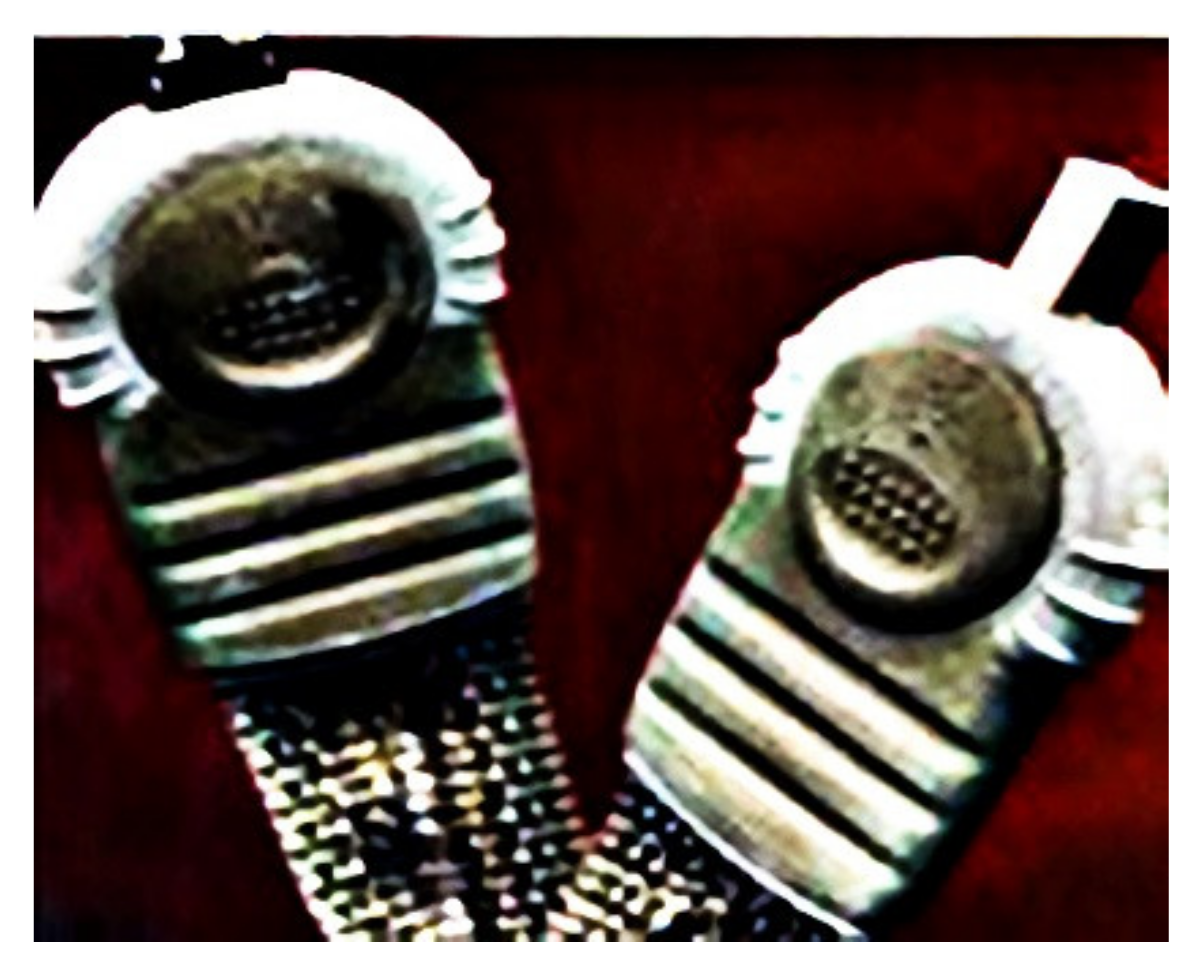
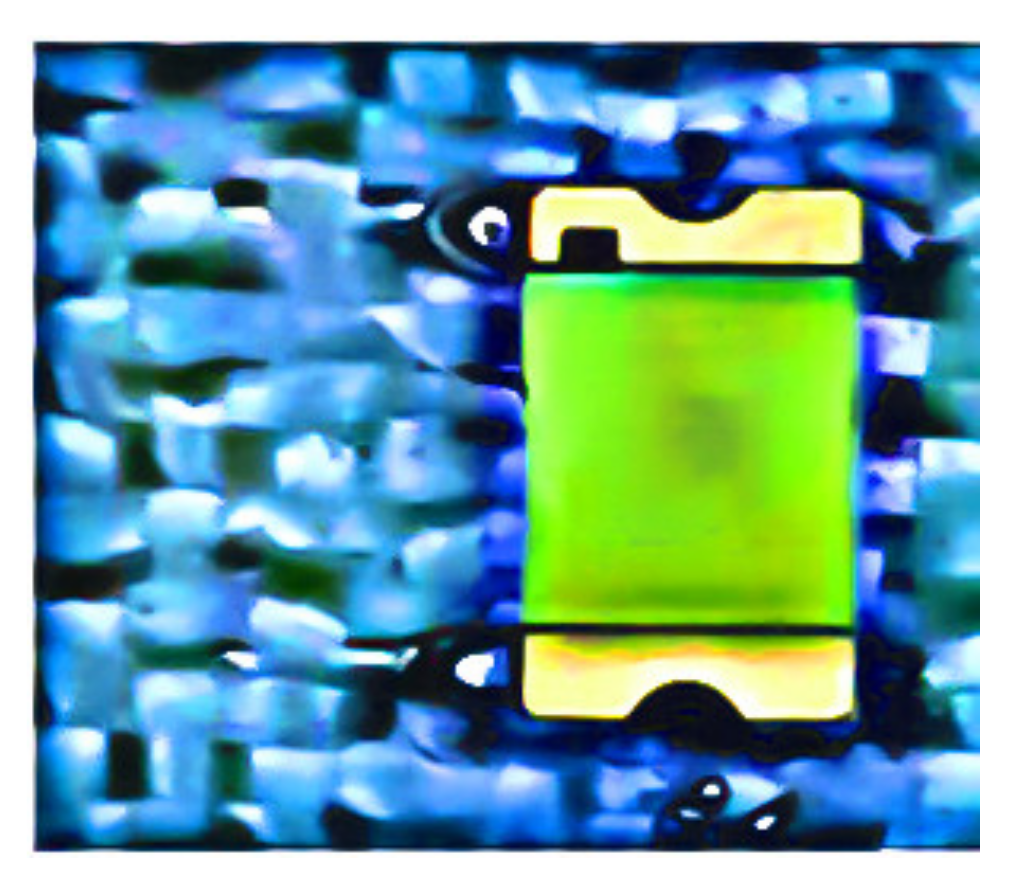
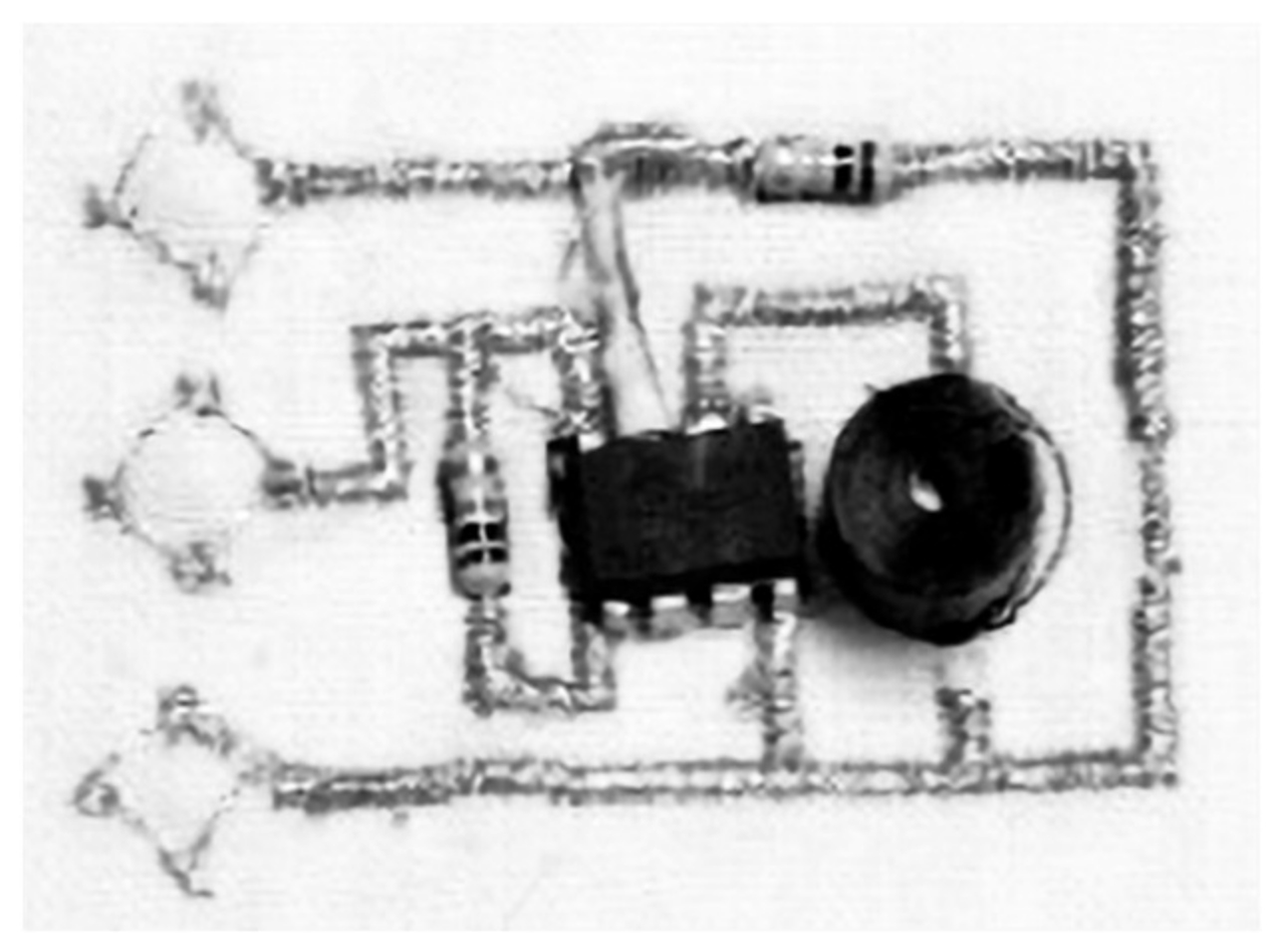



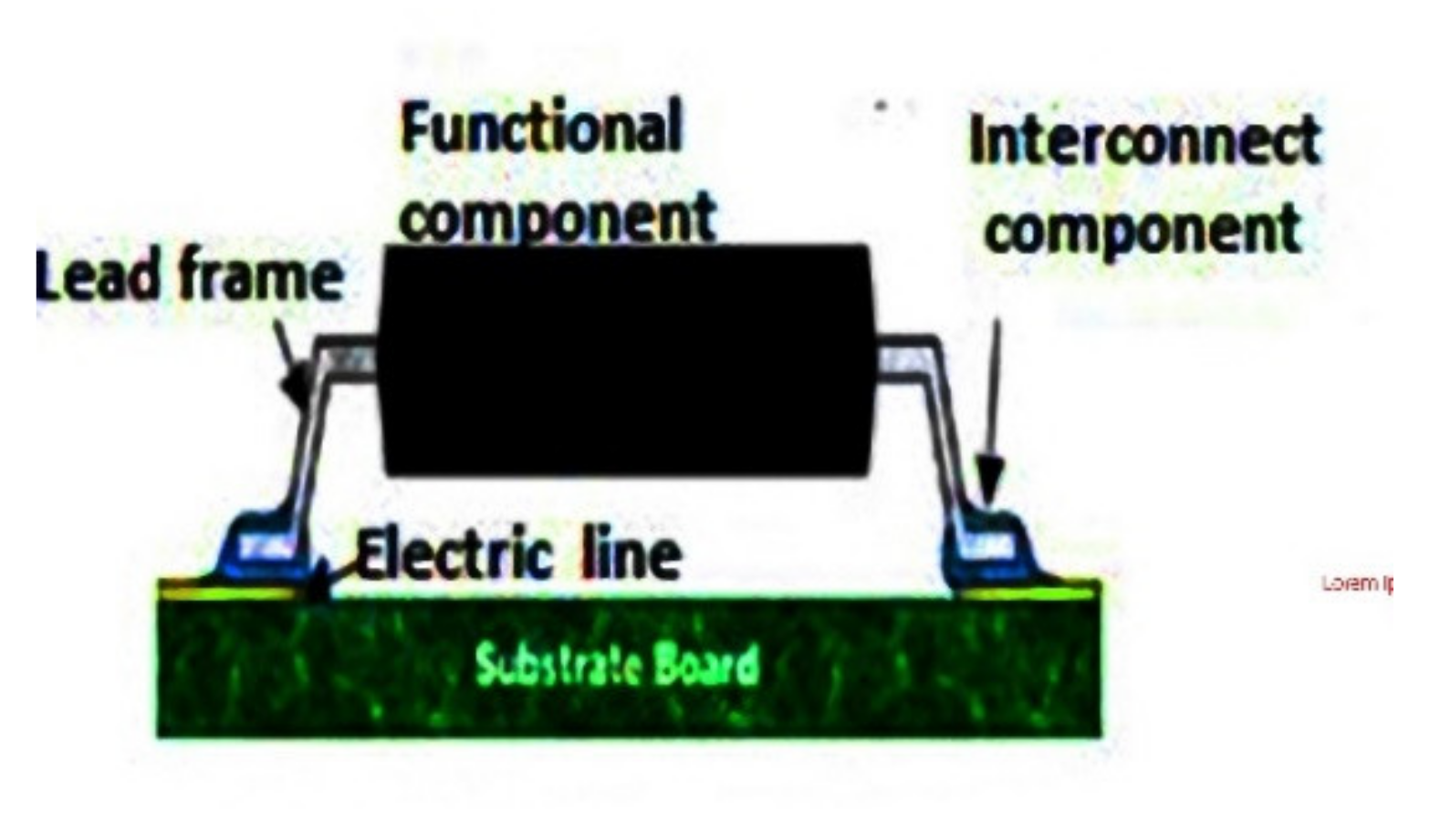
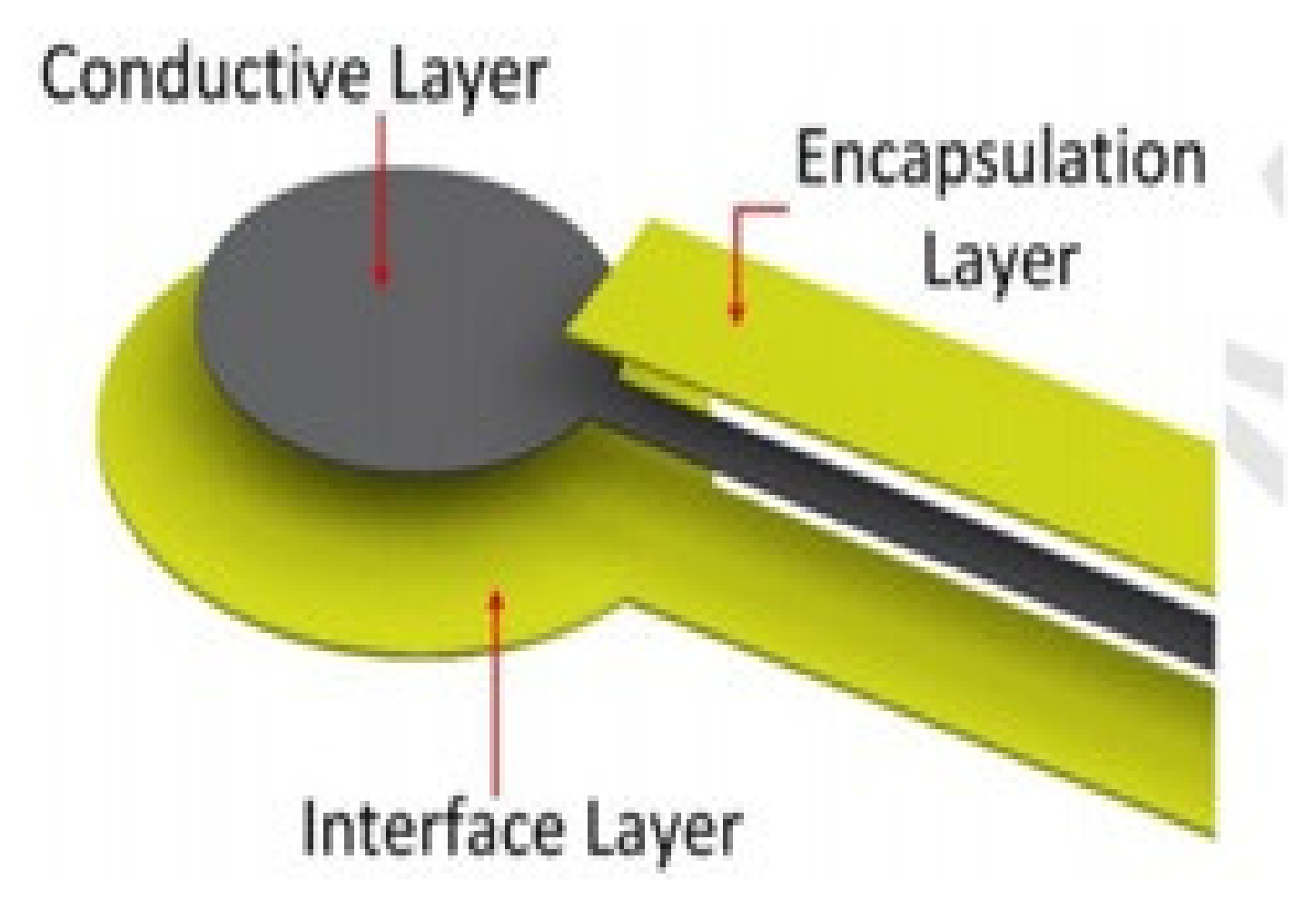
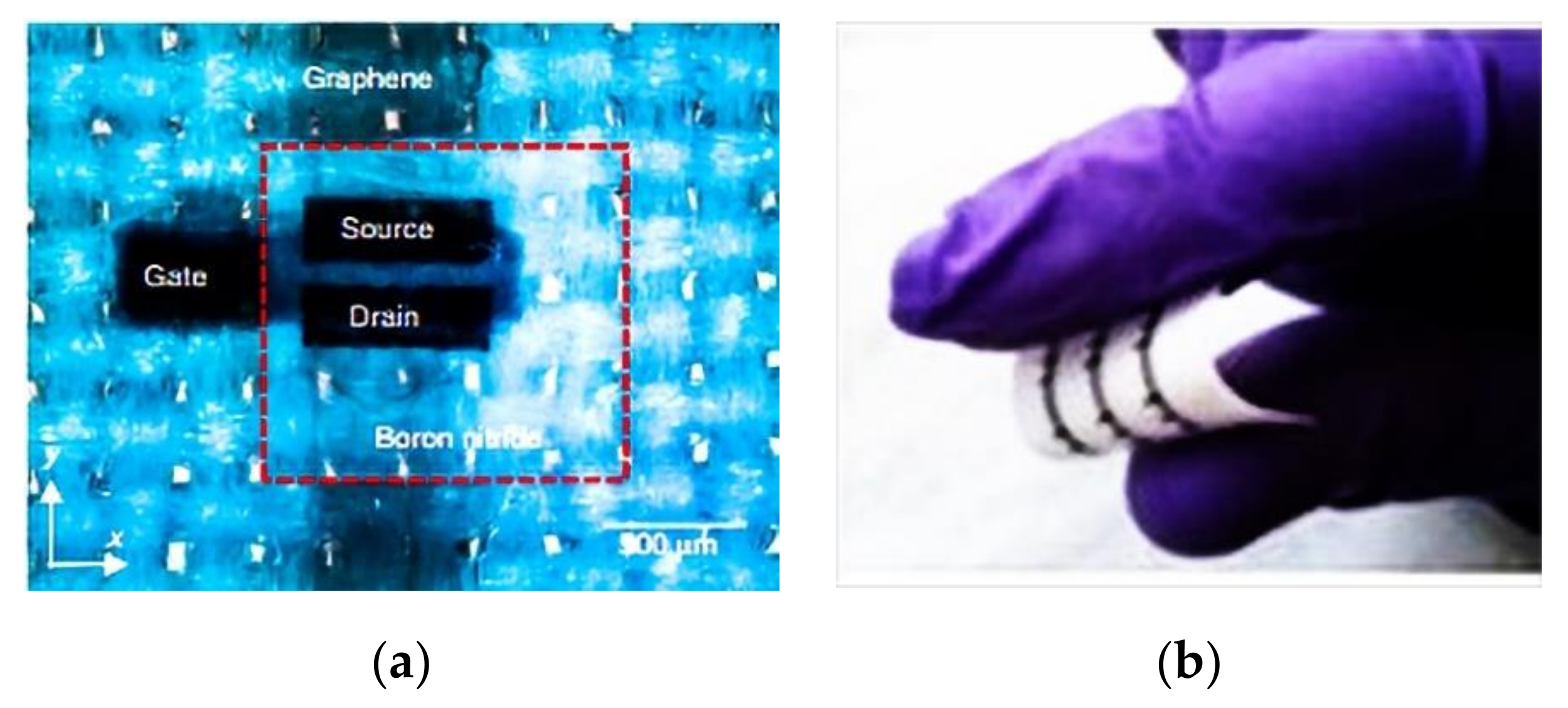

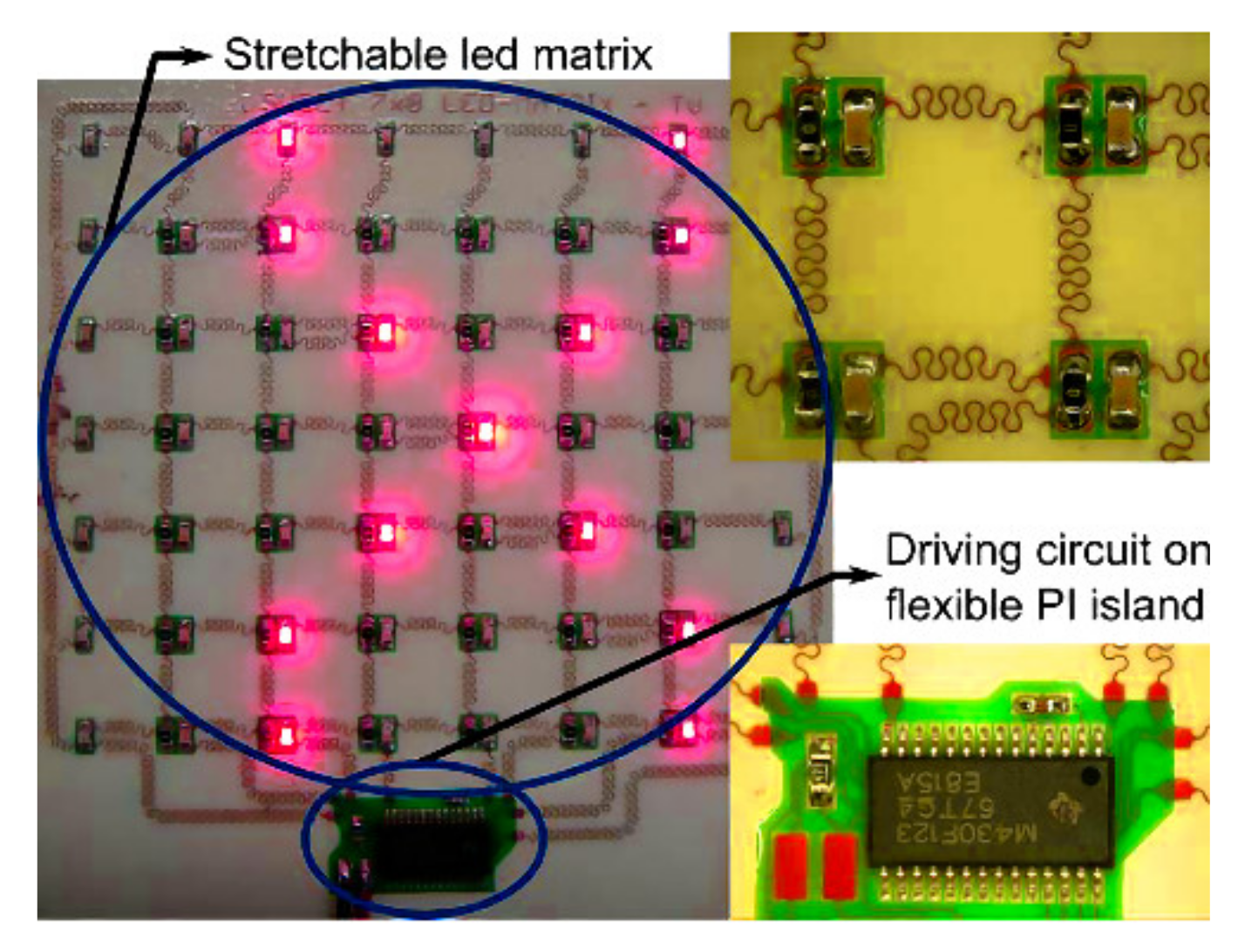
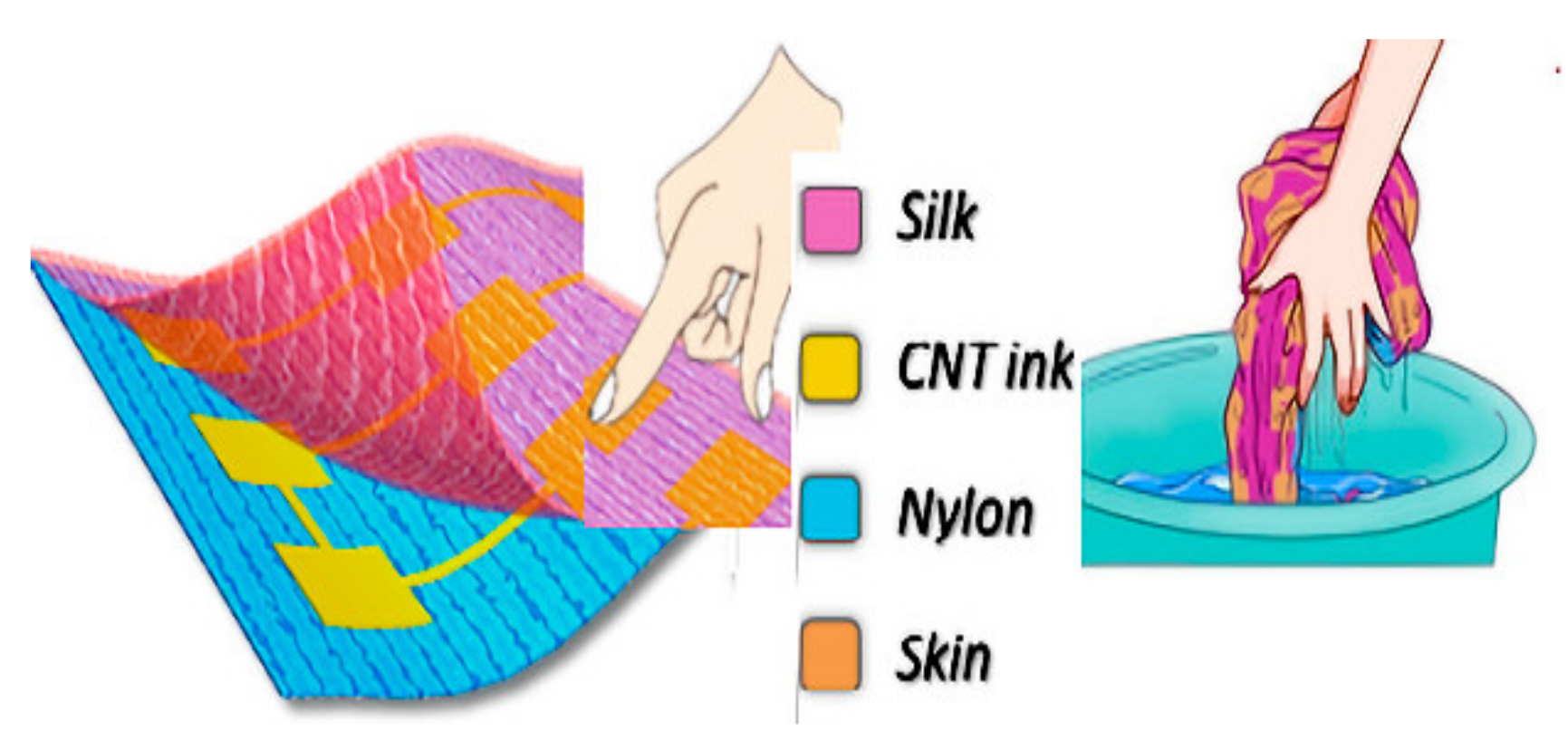

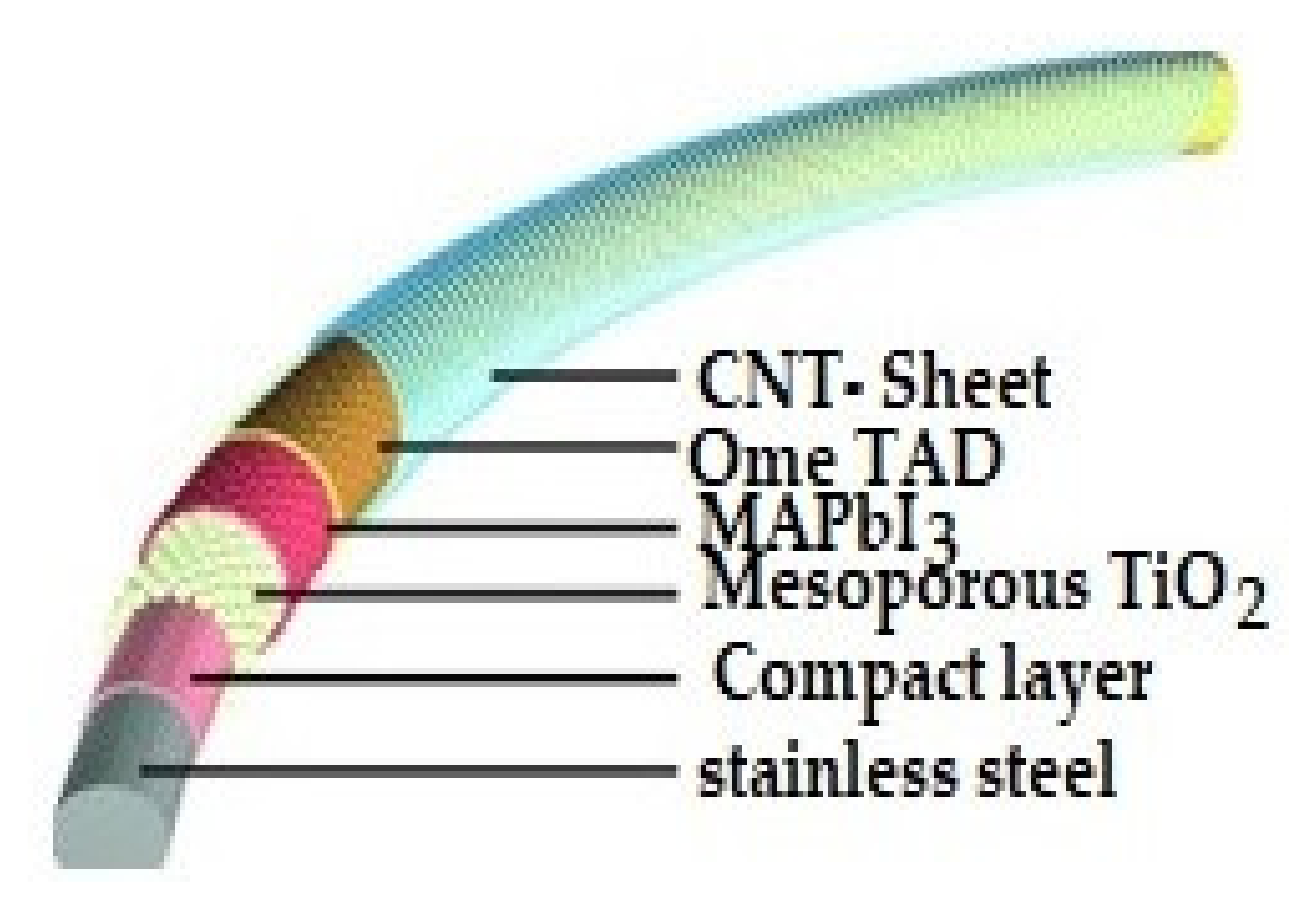


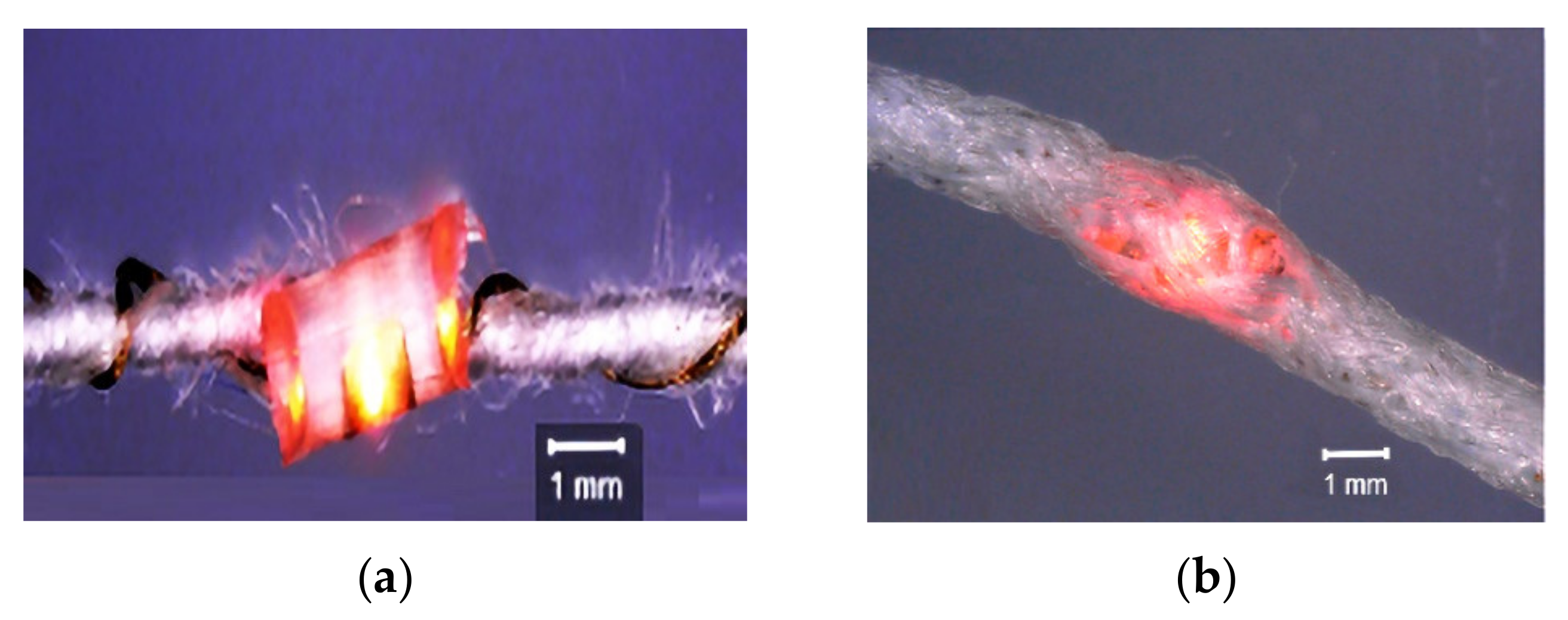
Publisher’s Note: MDPI stays neutral with regard to jurisdictional claims in published maps and institutional affiliations. |
© 2021 by the authors. Licensee MDPI, Basel, Switzerland. This article is an open access article distributed under the terms and conditions of the Creative Commons Attribution (CC BY) license (https://creativecommons.org/licenses/by/4.0/).
Share and Cite
Simegnaw, A.A.; Malengier, B.; Rotich, G.; Tadesse, M.G.; Van Langenhove, L. Review on the Integration of Microelectronics for E-Textile. Materials 2021, 14, 5113. https://doi.org/10.3390/ma14175113
Simegnaw AA, Malengier B, Rotich G, Tadesse MG, Van Langenhove L. Review on the Integration of Microelectronics for E-Textile. Materials. 2021; 14(17):5113. https://doi.org/10.3390/ma14175113
Chicago/Turabian StyleSimegnaw, Abdella Ahmmed, Benny Malengier, Gideon Rotich, Melkie Getnet Tadesse, and Lieva Van Langenhove. 2021. "Review on the Integration of Microelectronics for E-Textile" Materials 14, no. 17: 5113. https://doi.org/10.3390/ma14175113






